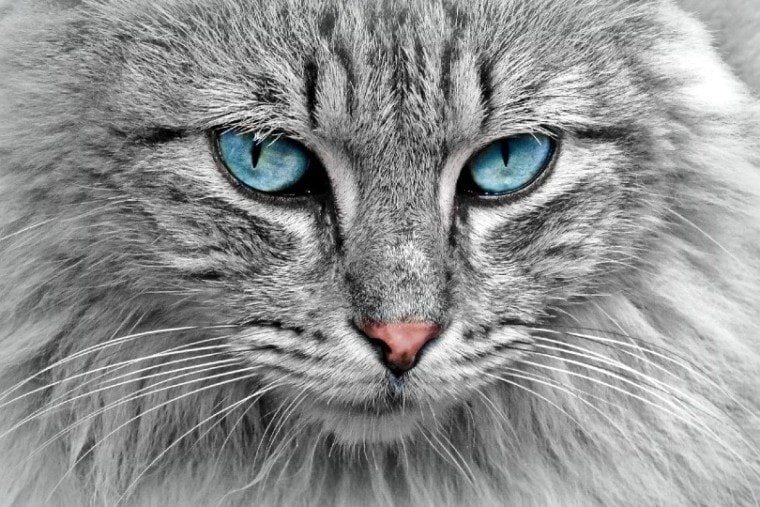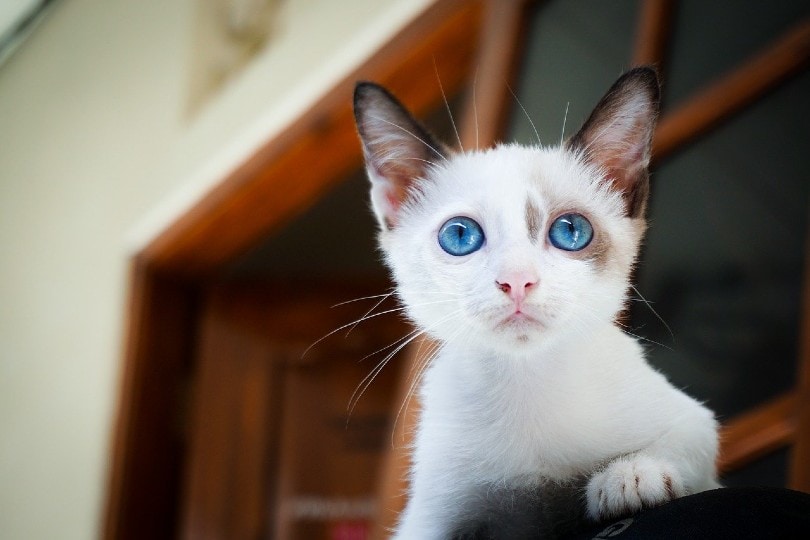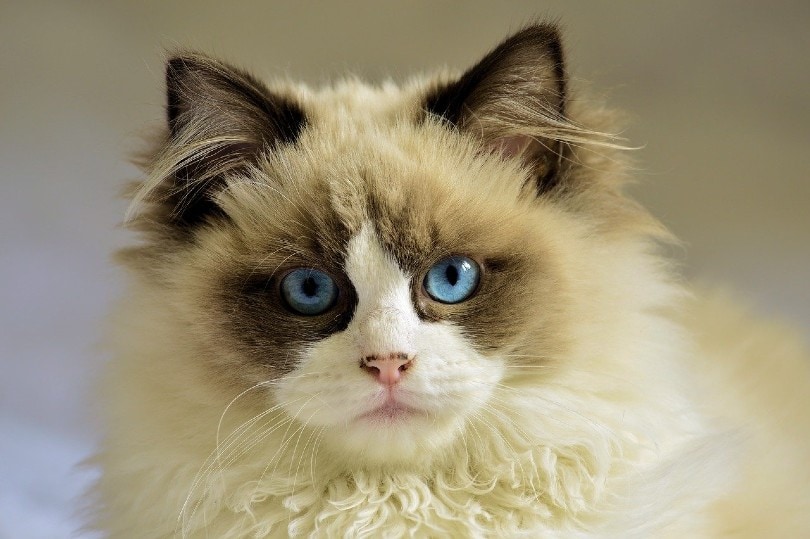
If the eyes are the window to the soul, then cats most definitely have beautiful souls! Our cats have such gorgeous and unique eyes that come in a variety of colors, but what if you notice your cat’s eyes look a little different? Can an adult cat’s eyes actually change color?
Essentially, a healthy adult cat’s eyes do not change color. If you have noticed a difference in the color of your cat’s eyes and it is not just a trick of the light, it could be a health issue that needs immediate attention.
Here, we go over common health problems that might affect your cat’s eyes. We hope that this will give you good information so you know what to look out for.
Kitten Eyes
Most of us know that there is one time in a cat’s life when there is a change in eye color. Kittens are all born with eyes that are bluish in color. Their eyes gradually change into the color they will have for the rest of their lives.
The reason kittens have blue eyes is that their eyes don’t have any pigment when they are born. So, the blue color in their eyes isn’t technically a color; it’s more of an optical illusion.
Kittens are born with their eyes sealed shut, which don’t open until they are about 8 to 12 days old. Once their eyes are fully open, you’ll see that their eyes are blue and won’t change color until they are about 7 weeks old.
When the kitten’s eyes begin to change color, the cells in the eyes are starting to produce melanin. Melanin is a kind of complex pigment that makes the pigmentation, or color, in our skin, hair, and eyes.

Adult Cat Eyes
A cat’s eye color is sometimes determined by their coat color and breed. Cats that are predominantly or all white tend to have blue, gold, copper, or green eyes, and pointed cats (such as Himalayans and Siamese) usually have blue eyes.
The color is also determined by how much melanin the eye produces. The higher the amount of melanin, the more intense and brighter the eye color will be, so green has a lower amount of melanocytes, whereas copper has a very high proportion of melanocytes.
Essentially, the fur, skin, and eye color are not actually determined by the color of melanin but by how much melanin is present.
If your kitten still has blue eyes by the time they’re 10 weeks old, they’ll probably retain their blue eyes into adulthood. Once a kitten’s eye color has come in, that is the color that they will have throughout their adult life.
Cat Eye Colors
The color of cat eyes has quite a wide range.
Then there are the more unusual characteristics that can sometimes be found in a cat’s eyes and are usually rare.
If you’re wondering what the most common eye color in cats is, it is usually some form of gold, yellow, or greenish-yellow.
What Causes Eye Color Changes in Adult Cats?
It’s quite rare for an adult cat to suddenly have a change in eye color without it being a health issue.
Sometimes a change in the ambient light might make it seem like your cat’s eyes are changing color, but it really is just the light refracting off of the eye.
Then there are the pupils. When your cat is very excited or when it’s nighttime, the pupils will dilate, giving your cat a very Puss in Boots appearance.
And lastly, there are the glowing eyes that you sometimes see staring at you from a dark room or corner. Interestingly, if your cat has any eye color but blue, you’ll see a yellow or golden glow when light is reflected off the eye. This is the reflection from their tapetum lucidum. But if you have a blue-eyed cat, the eyes can glow red!

The 4 Possible Eye Health Problems in Cats
If there’s a change in your cat’s eye color, it’s a possibility that it’s a sign that there’s a health issue.
1. Anterior Uveitis
This condition always requires immediate veterinary care. It can cause your cat’s eye to become red, cloudy, or dull, and the color of the iris might look different or uneven.
2. Jaundice
This condition is caused by bilirubin accumulation in your cat’s bloodstream and can lead to yellow discoloration of the skin, gums, and eyes. You will notice the white of your cat’s eye becoming yellow or orange. It is a serious condition that is accompanied by general signs of illness.
3. Glaucoma
This condition occurs when the eye experiences high pressure and can eventually lead to the loss of sight. Glaucoma in cats is usually linked to another eye condition, and this determines the way their eyes may look. Your cat’s eyes may show iris color changes or appear dull, or your cat may develop a tumor inside their eye.
In later stages, cats might lose their appetite or become lethargic, and you might see them pressing their head against a wall to relieve headaches.
4. Cataracts
This eye condition can make your cat’s eye appear a different color, though the structure that changes color is the lens, not the iris. You will notice a whitish or dull color through your cat’s pupils when they develop cataracts.
The truth is, if you can rule out your cat’s eye color change as a trick of the light (or any other reasonable explanation), then you probably have nothing to worry about. But otherwise, you should take your cat to the vet as soon as possible!
Most of these conditions are quite serious, and in the long run, a change in your adult cat’s eye color might be something your vet will need to look after.
Conclusion
So, we’ve learned that while a kitten’s eye color does change when they start to grow a little older, adult cats really don’t experience eye color change.
You truly know your cat better than anyone else, so if you notice a change that wasn’t there before, it’s best to talk to your vet immediately. If nothing is wrong, at least your mind will be at ease.
Taking the best care of your cat and their beautiful eyes is essential. You want them around for a long time.
Other interesting articles on the topic:
- Glow-in-the-Dark Cats — Genetically Modified Cats Explained
- Conjunctivitis in Cats (Pink Eye): Treatments, Symptoms & Prevention
- Deafness & Blindness In White Cats: Here’s What The Statistics Say
Featured Image Credit: cocoparisienne, Pixabay







